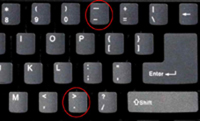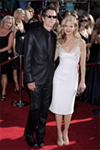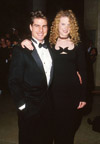![]() View this short video clip below to review types of reactions.
View this short video clip below to review types of reactions.
Source: Marian Krieger Weber
Use your notes to record your observations for the following activity.

 |
+ |
 |
→ |  |
+ |  |
The Ashton ion replaces the Bruce ion in the Bruce-Demi compound making an Ashton-Demi compound and a Bruce ion. AB + C → CB + A. (A = Bruce, B = Demi, and C = Ashton)
 |
+ |  |
→ |  |
After writing an answer in your notes,
Interactive popup. Assistance may be required.
Synthesis
Reactants, Kevin and Kyra, react to make a Kevin-Kyra compound.
A + B → AB
(A = Kevin and B = Kyra)
 |
→ |  |
+ |  |
After writing an answer in your notes,
Interactive popup. Assistance may be required.
Decomposition
The Sandra-Jesse compound breaks apart into the two products of Sandra and Jesse.
AB → A + B
(A = Sandra and B = Jesse)
 |
+ |  |
 |
| → |  |
+ |  |
Double Replacement
The Nicole-Tom compound and Katie–Keith compound both break apart and recombine to form a Katie–Tom compound and a Nicole–Keith compound.
AB + CD → CB + AD
(A = Nicole, B = Tom, C = Katie, and D = Keith)
Now look at some actual chemical reactions. Record the type of reaction for each equation your
notes.
| 8 Fe + S8→ 8 FeS |
|
| 2 H2O → 2 H2 + O2 | |
|
Zn + 2 HCl → ZnCl2 + H2 |
|
| NaCl(aq) + AgNO3(aq) → NaNO3(aq) + AgCl(s) |
Images used above, as they appear, left to right, top to bottom: